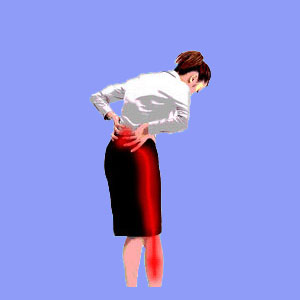
Sciatica tired legs is one of the many possible symptomatic expressions of lower body dorsopathy and related neuropathy. Tired legs can be caused by a great number of possible reasons, ranging from simple overuse of muscles to spinal nerve compression concerns to circulatory difficulties.
Chronic fatigue is common in many back pain sufferers and may be linked to a psychosomatic causation in some instances. However, there might be purely anatomical factors which may also cause a feeling of extreme muscular tiredness in the legs or feet. Remember that it is crucial to undergo a complete exam from a qualified physician if you experience ongoing fatigue in any part of your body to rule out potentially serious health conditions which may be responsible for your non-stop tiredness.
This narrative examines tiredness in the leg muscles as part of an ongoing sciatic nerve pain problem.
What are Sciatica Tired Legs?
Tired legs is a condition which is also commonly known as weak legs. The muscles in the legs will not be responsive and will often feel heavy and worn out, regardless of the intensity or frequency of physical exercise. Some people, such as myself, on occasion, actually get out of bed after a good night’s sleep already feeling as if they were on their feet all day. This can be very disturbing to say the least.
Chronically weak or tired legs can be very affective in terms of physical functionality and can also enact troubling emotional issues, such as malaise or depression. Being that there can be many possible local, neurological and systemic sources of fatigue, diagnosis is often a difficult and less than perfect process.
Tired and Weak Leg Expressions
Chronic fatigue throughout the body, or in certain areas of the body, is a medical mystery and has been linked to the mindbody process by many enlightened caregivers. In my own experience, I find this to be true for a large number of patients who have received a diagnosis of CFS.
Obviously, this theory or mindbody enactment is supported by the incredibly ineffective curative statistics of most medical therapies and is further supported by the moderate incidence of cures using knowledge therapy.
Remember that weakness comes in 2 distinct forms, objective weakness in the legs and subjective weakness in the legs. The expression is one of the best indicators as to the potential cause, so it is vital to ascertain which type of weakness exists in each patient. Your neurologist can help in this regard.
Sciatica Tired Legs Factsheet
Objective weakness can be diagnosed and proven via specialized neurological testing, as well as via physical exam. This type of weakness is far less common than subjective weakness where the patient complains that their legs feel weak, but demonstrate little, if any, reduced functionality or strength.
Pinched nerves, and other spinal sources, such as spinal stenosis, will almost always enact objective weakness, while most non-spinal causative processes, such as regional ischemia, are more likely to cause subjective weakness. Of course, this is only a guideline, but it is a good one at that.
Be assured that chronic tiredness is not normal for almost anyone to endure and there should be an effective treatment available. The most difficult part may be achieving an accurate and correct diagnosis as to the actual source of leg tiredness before undergoing treatment.




